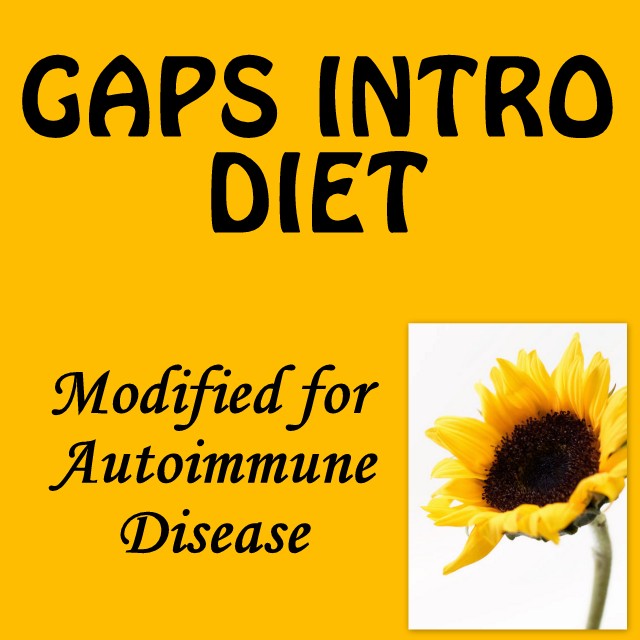
“In science the important thing is to modify and change one’s ideas as science advances.”
~ Herbert Spencer
The Origin of This Post
If you’ve followed my blog for a while, you know that I started with the GAPS diet, and then transitioned to the Paleo Autoimmune Protocol (AIP), because I was still struggling with inflammation and autoimmune flares. Katy Haldiman had the same experience, and we’re not alone. Many people with autoimmune disease struggle on the GAPS protocol because it reintroduces foods very quickly, that are common food intolerances for people with autoimmune disease (such as nuts, dairy and eggs.) The GAPS protocol uses a skin sensitivity method to determine food intolerance. Unfortunately, this doesn’t work for many of us.
Katy is a nutritional therapist whom I interviewed on a recent episode of the Phoenix Helix podcast. This topic came up, and she mentioned that she modified the GAPS Introduction Diet to use with her autoimmune clients, with great success. I asked her if she’d share it with us, and she agreed. Here’s Katy, writing about this protocol:
Katy’s Consultation Method
In the ancestral health community, there are several healing diets for those struggling with autoimmunity and chronic health issues, including the Paleo Autoimmune Protocol (AIP), the Wahls Diet, the Specific Carbohydrate Diet, and the GAPS Diet. All of these diets share certain similarities, as well as key differences. As a nutritional therapist, my role is to formulate a customized nutritional template that (1) addresses the client’s bioindividual needs and (2) facilitates the discovery of food and environmental triggers that contribute to symptoms. I often draw upon key principles from a combination of these various healing diets when I structure nutrition and lifestyle recommendations for a client. For clients that are struggling with moderate to severe digestive symptoms or are immunocompromised, I often begin by recommending a modified version of the GAPS Introduction Diet.
A Brief Overview of GAPS
Developed by Natasha Campbell-McBride, MD, the GAPS protocol consists of three components:
- Therapeutic Diet
- Supplementation
- Detoxification and Lifestyle Changes
The dietary component of GAPS builds upon the Specific Carbohydrate Diet, with an additional emphasis on healing broths and fermented foods. The GAPS Diet has a 6 stage Introduction Diet (which typically lasts 3-4 weeks) followed by the Full GAPS Diet (which is recommended to be followed for 18 months- 2 years). The GAPS Introduction Diet can be thought of as a “gut reset” and it is designed to remove inflammatory food triggers, heal the lining of the digestive track, and set the stage to restore bio-diverse gut flora. The Full GAPS Diet is similar to the Paleo Diet, except that it includes some dairy and legumes.
Why Are Modifications Necessary?
While the GAPS Diet as outlined by Dr. Campbell-McBride has helped countless people to heal their guts, there are some foods permitted in the introduction stages that I have found to be problematic for many clients struggling with digestive and/or autoimmune symptoms. These foods include:
- Dairy (introduced as fermented dairy in stage 1, ghee in stage 2, and butter in stage 4)
- Eggs (introduced in stage 2)
- Nuts (introduced as nut butter in stage 3 and nut flour in stage 4)
- Nightshades (introduced in stage 5)
- I modify the GAPS Introduction Diet by eliminating these foods while progressing through each of the stages.
Why Do the Introduction Diet at All? Why Not Simply Jump to the AIP?
Many people can go straight to the AIP and do well. In my practice, I recommend the Modified GAPS Introduction Diet for clients that have gastrointestinal diseases, such as Crohn’s disease, ulcerative colitis, and irritable bowel disease or persistent digestive symptoms, such as reflux, diarrhea, bloating, abdominal pain, or constipation. I may also recommend it for clients with autoimmune disease that have attempted other healing diets, but have not been able to control their symptoms as well as they would like. The GAPS Introduction diet gives the digestive system time to rest and recover. If you don’t fall into these special categories, you may never have a need to do GAPS Intro.
My modifications to the GAPS Introduction Diet are in line with the dietary recommendations of the AIP. However, the protocol still varies from AIP in the preparation of foods (cooked foods only during the first few introductory stages) and the step-wise progression that foods are reintroduced in each stage. After the client progresses through the modified GAPS Intro stages, I may recommend transitioning to the AIP or another healing diet depending on the client’s needs. It’s important to keep in mind that the GAPS Introductory Diet is only designed to be followed for a limited period of time.
Another modification that I make to the GAPS introduction Diet concerns the amount of non-dairy fermented foods. Fermented foods can be healing, but only a small amount is generally necessary in order to reap their benefits. It is possible to consume too many fermented foods, which can exacerbate digestive symptoms. The main benefits of fermented foods are in the nutrients produced when the bacteria ferment, including B vitamins, enzymes, and bioavailable flavonoids. The probiotics present in fermented foods do not actually colonize the gut and cannot significantly alter gut dysbiosis. While fermented foods are generally beneficial to digestive health, it is wise to moderate the amount consumed and consider additional supplementation with a high quality probiotic that has the ability to colonize the gut, like Megaspore. *Editorial update by Eileen: I’ve been interviewing a number of healthcare professionals on my podcast recently, and the opinion on fermented foods vs. probiotics varies greatly. Some like Katy believe that probiotic supplements are an essential part of a healing protocol. Others believe they can actually be healing stumbling blocks. Why the difference? Because probiotics are immune system stimulants. For people with autoimmune disease, this can go one of two ways: (1) They can help rebalance your immune system in a healthier direction. (2) They can cause an autoimmune flare. Always start slow with both probiotics and fermented foods, tuning into your body and only increasing the amount if well tolerated. Don’t take any probiotic that makes your symptoms worse. It often takes some trial and error to find one that works well for you.
Katy’s Modified GAPS Introduction Diet
STAGE 1
- GAPS: Soups made with homemade stock, meat/fish, and non-fibrous vegetables. Add a small amount of fermented dairy or fermented vegetable juice to the soup. Ginger honey tea and broth between meals.
- AIP Modifications: Avoid dairy, choosing fermented vegetable juice instead.
STAGE 2
- GAPS: Continue with soups, but you can also eat casseroles and stews. Avoid spices, and use sea salt and herbs instead. Add raw organic egg yolks and soft-boiled eggs to the soups. Start cooking with ghee. Add fermented fish to the diet.
- AIP Modifications: Avoid eggs and ghee. Watch your response to fermented foods carefully, and only increase as tolerated.
STAGE 3
- GAPS: Continue with foods from earlier stages. Add mashed avocado to the soups. You can expand egg consumption to include scrambled eggs. And you can now eat pancakes made with nut butter, eggs and squash. Continue to increase fermented foods, adding fermented vegetables to the diet.
- AIP Modifications: Continue to avoid eggs and dairy. Avoid the pancakes, due to the nuts. Eat fermented foods as tolerated, but limit to reasonable quantities.
STAGE 4
- GAPS: Continue with foods from earlier stages, and add roasted and grilled meats, (not overcooked). Add extra virgin olive oil to each meal. Add freshly pressed juices beginning with carrot juice. You can now have bread made with nut flour, butter and eggs.
- AIP Modifications: Continue to avoid eggs, dairy and nuts, which means avoiding the bread.
STAGE 5
- GAPS: Continue with foods from earlier stages, and add raw vegetables to the diet, including tomatoes. Add some fruit to your freshly pressed juices, but avoid citrus. You can now eat peeled and cooked apples.
- AIP Modifications: Continue to avoid eggs, dairy and nuts. Avoid nightshade vegetables.
STAGE 6
- GAPS: Continue with foods from earlier stages, and add raw fruit, beginning with peeled apple. You can now bake desserts, using dried fruit as the sweetener.
- AIP Modifications: Continue to avoid eggs, dairy, nuts and nightshades.
Transition
- GAPS: The normal transition is to the Full GAPS Diet.
- AIP Modifications: I recommend most people with autoimmune disease transition to the Paleo Autoimmune Protocol or the Wahls Protocol instead.
Resources


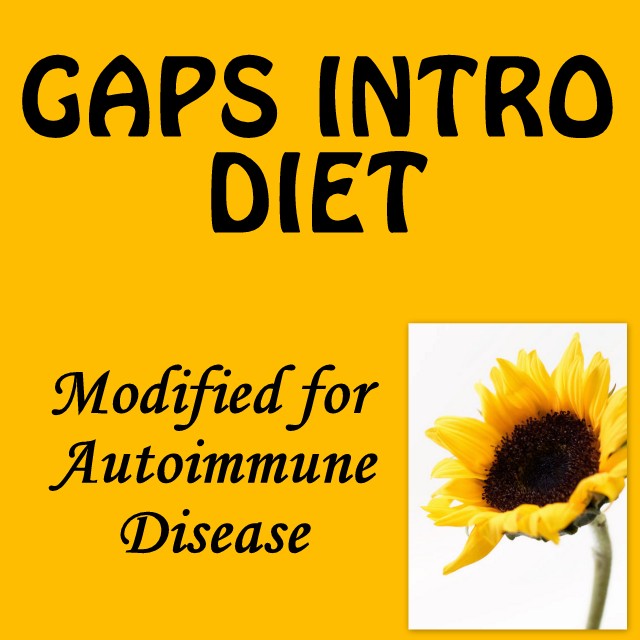

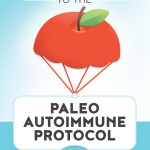
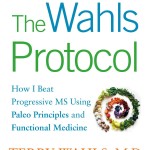
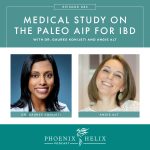

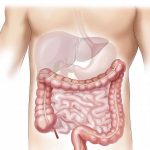

What are considered non-fibrous vegetables?
Hi Lynn. This is explained in more detail in the GAPS book. The first stage of the Introduction Diet is primarily focused on soups with homemade broths and a very small amount of cooked vegetables blended into those broths. Vegetable and fiber intake slowly increases in the other stages. A low-fiber diet isn’t ideal long-term, but used in a healing format like this, it rapidly changes the microbiome and can help to quickly alleviate digestive symptoms. Some examples of non-fibrous vegetables would be peeled carrots and butternut squash, peeled and de-seeded zucchini, and broccoli and cauliflower florets (with stalks removed) – all well-cooked.
Thank you so much for sharing your advice and experiences regarding healing diets. I am in Stage 4 of the GAPS introduction diet. Eating this way for the past six months has put my autoimmune inflammatory arthritis and digestive problems into remission. I have even been able to return to work! Unfortunately, combining full time work and part time university study led to stress and exhaustion, which led to weakness in my resolve. Combined that with the sudden presence of milk chocolate in my house, and well…. I fell of the wagon, resulting in some minor joint pain and abdominal bloating. Have I blown it? Will I have to return to stage 1 of the GAPS introduction diet now and begin all over again? I’m not sure I have the strength.
I don’t think you’ve blown it, Amy. Just go back to Stage 4, as if you never fell off that wagon. Once you’re stable again, you might try to transition through the other stages to the Full GAPS diet, with the goal of expanding your diet safely without a return of symptoms. If you need any support, Katy does work with people 1:1. I believe in you!
Thanks so much, Eileen!
I tried the AIP for three months with little success. I have hashimoto’s, epstein Barr and other issues. I am going to finally try the gaps diet but it’s so confusing with all the additions and know I need to combine it with AIP as well. Can you put up some recipes of what you’ve used for each stage? Or even do a book like you did the AIP instant pot one (which is why I was able to be successful on AIP for so long).
HI Sabrina. If you’re look for Full GAPS + AIP recipes, most of the recipes on my blog’s recipe page are a blend of those two diets. I’m afraid I don’t have time create a resource for the introduction diet at this time. However, if you need assistance, I recommend reaching out to Katy . She offers nutritional consulting and can guide you the process very well.
When can I take supplements (probiotics, fish oils, vitamins…)? Or at what stage?
Thank you,
Marisol
Hi Marisol. The GAPS Diet recommends eliminating all supplements during the introduction portion of the diet and adding them back in – one at a time to test for tolerance and benefit – once you transition to the full diet.
Thank you so much. So it is safe to say a supplement can be added after a month?
Hi Marisol. 30 days is the minimum recommended time before trying reintroductions. Then, your body will let you know if that supplement is safe for you.
What is the recommended time to stay on each phase? Is each phase a week? I have Crohn’s and have found that works best for me is AIP combined with low fodmap. This approach gives me hope that I could possible transition to AIP and not continue low fodmap.
Thanks,
Charissa
Hi Charissa. Generally, people stay on the introduction diet approximately one month, so that’s a little less than a week at each of the 6 stages. Your symptoms are also a guide – some people stay longer at certain stages than others.
Thanks for the quick reply. I am starting GAPs today. I am hopeful it will help. 🙂
Thanks, this was helpful! I’m wondering how to get enough calcium and other nutrients with these restrictions, though. I was sad to find out that bone broth doesn’t contain much calcium, so I added up the calcium in all the meat and veggies I’m eating and, even with many cups of leafy greens and high-calcium proteins like salmon, it’s still about half of what I need each day. Any suggestions? Should I just add a calcium supplement?
Hi Ann. This is a common question in the paleo community. When it comes to calcium, its absorbability makes a big difference. This article from Paleo Leap is excellent at delving into calcium research and how much absorbed calcium we actually need (which is very different from the RDA). Dairy isn’t the magic source that the milk commercials want us to believe. It’s definitely possible to get enough calcium on a dairy-free diet: https://paleoleap.com/calcium/.
Good morning Eileen, I just discovered your Phoenix Helix our site. I am glad you share such wonderful information. I was wondering if you could please let me know your thought on DE. I just started Diatomaceous about a week ago. 1 Tablespoon in the morning. I have suferred with severe stomach issues from Autoimmune Disease. I am a vegetarian except for eggs and grass fed gelatin. I try to follow the AIP diet. Is DE as good as the claims are?
Hi Victoria. I have no experience with DE, but I’m skeptical of any supplement with wild claims. I believe in food first. Wishing you wellness!
I never comment on sites/blogs but I have to say THANK YOU! This is EXACTLY what I’ve been looking for because I have serious gut issues along with Celiac and Lyme disease. I’ve been on GAPS Intro Stage 1 for a while and while it was hard without carbs, my gut stopped hurting for the first time in years and my stool was normal! But when I added the fermented dairy in stage two, I got SERIOUS inflammation including cystic acne! So I cut out dairy again (which I have been off of since I got Lyme disease) and then wondered how I was going to keep going on GAPS when there is SO much dairy! THANK YOU! My nutritionist wanted me to go AIP and I did for a couple of months before GAPS and it helped a lot and my skin completely cleared up and my energy was higher than ever but when I introduced nuts I got SO sick and was in so much pain intestinally I couldn’t work or do anything. So I got scared and stopped AIP and went to GAPS. Thanks for making the way easier.
It sounds like this article is perfect for you. I’m so glad. Wishing you full healing!
Thanks for all the information! I have a leaky gut due to taking antibiotics about 3 months ago, but not an autoimmune disease. I am extremely sensitive to gluten and all grains, especially corn. I have severe hives that will not go away with the regular Paleo diet, but no other symptoms. Would this diet be good for me?
Hi Diane. Since you don’t have autoimmune disease, you don’t need to do something this restrictive. With hives, you might look into Histamine Intolerance. Here’s a website that describes it well: http://www.foodsmatter.com/allergy_intolerance/histamine/articles/histamine_joneja.html and here’s a website with cookbooks and lifestyle information: http://thelowhistaminechef.com/
Marcie, if you are breastfeeding, you can take the probiotics. I dont know if they will transfer to your milk, but it will help your digestion.
Are you doing AIP?
That’s good advice! I also remembered that Chris Kresser recommended dusting the nipple with an infant probiotic powder just before breastfeeding, as a way to introduce probiotics to babies.
Also, you mentioned Katy recommends a GAPS friendly “solution in a bottle”. What is that? Did you all post it somewhere or is it on her pod cast. I am desperate to help my 6 month old little boy, with severe eczema, belly issues and not having consistent bowel movements. He also cries and is uncomfortable most of the time. It is heartbreaking!
Hi Marcie. Katy recommends the Megaspore brand of probiotic, but it’s only available when prescribed by a practitioner like Katy: you would need to be working with her to have access to it. I’m also not sure it would be suitable for infants. There are supplements like GutPro Infant designed for infants, but before giving your baby any supplements, I would definitely recommend talking with someone with more expertise than me. Gentle hugs to you. Your love shines through!
I had food sensitivity tests done and they came back positive for some foods. Do I also need to avoid/remove these foods during the GAPS intro or AIP? Then do I add one back in at a time? Thanks for all your help!
Hi Marcie. I think that’s far too many restrictions. Food sensitivity testing is notoriously inaccurate. Dr. McBride actually talks about this in her book. When you have leaky gut, your immune system reacts, and if you got tested every day, your results would be different every day, based on what you’ve been eating. That’s not a true sensitivity. That’s just a sign that your gut needs healing. So, I recommend setting aside your test results and simply doing GAPS Intro. Modified for AIP. If you need further guidance, Katy is available for 1:1 consults.
thanks! now I understand. I am not following the GAPS plan, but I bought some probiotic capsules. I love my homemade sauerkraut too, so its all good!
“The probiotics present in fermented foods do not actually colonize the gut and cannot significantly alter gut dysbiosis.”
I’m confused. I thought the microbes in fermented foods DO colonize the gut – which is part of the reason to eat them! Suddenly you are telling us this is not true (and recommending a brand of probiotic only sold to “health professionals”. hmmmm…) Can anyone out there clear up this confusion? Are fermented foods good for getting the “good” microbes into our guts? Or are we deluded into thinking eating a food can/should do the job of a specialty formula?
The first time I learned that fermented foods don’t colonize the gut, I was equally shocked and confused, and wondering why I was eating them, so I totally understand your feeling! Sarah Ballantyne writes about this in The Paleo Approach. Fermented foods are medicinal on their way through our bodies. They have anti-inflammatory effects, they tighten the junctions of our gut lining (helping to heal leaky gut), and they help us digest our food. So, they’re very beneficial, but they don’t stick around. That’s why we eat them every day. The probiotics that are shown to “stick around” are spore-based ones, like the brand Katy mentioned, and another one which you can buy yourself: Prescript Assist.
However, if you’re someone who wants to try food first, resistant starch has been shown to increase the beneficial bacteria in our gut in a colonizing fashion. Green plantains are an AIP-friendly source of resistant starch. However, that’s contraindicated (not allowed) during the GAPS Introduction diet, because starch and fiber are removed from the Intro Diet. (Unfortunately resistant starch can also feed pathogenic bacteria, so the GAPS Introduction diet is designed to starve out bacteria overall – temporarily – and set “a clean slate” for colonizing with the good guys.) That’s why Katy recommended a GAPS-friendly solution “in a bottle” for anyone following the GAPS Intro Diet.
Do you know if this would work for someone with histamine intolerance? The low histamine diet says no cultured foods. Thanks!
Hi Amber. I wouldn’t recommend this for anyone with histamine intolerance, not so much for the fermented foods (because Katy recommends such a small amount). Rather, because of the high use of broth, which is a high-histamine food. If you’re looking for AIP + Low-Histamine recipes, check out Grazed and Enthused. Also, 1/2 the recipes in the new AIP Breakfast Cookbook are either low-histamine as written or easily modified (a chart is located at the end of the cookbook.)
Eileen, this is just what I was going to try to create for myself, so I am excited to have the professional guidance from Katy. I am taking part in the SAD to AIP program right now and know that I will need to further limit my diet in order to treat my rheumatoid arthritis (RA) and several toxic intestinal over-growths (confirmed by lab tests). Like you, GAPS worked for me, but I reintroduced too quickly, then cheated now and then, causing me to begin to relapse back into my peripheral neuropathy (PN). That’s when I found you and can now move forward again. Yeah!
Perfect timing!
I found this so helpful. I really appreciate this information, sending big thanks and much gratitude your way.
You’re welcome, Kathy!
Thanks – this was really helpful. I have ulcerative colitis and, after spending time researching the different options, opted to follow a paleo and then the AIP. However, I had to modify it quite considerably in the early stages, e.g. to cut out uncooked veg/fruit and certain high FODMAP foods which my body struggled to digest. It is working well for me at the moment, but it’s helpful to have this as an option should I get another flare-up of the disease.
Thanks for sharing your experience, Emma! It sounds like you came up with a similar modification for yourself. You’re very wise. While hopefully you are past the flare stage yourself, I think this diet would be perfect for anyone navigating a UC flare.